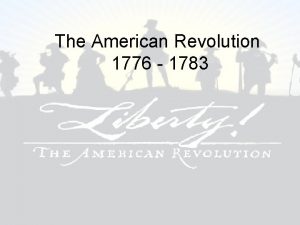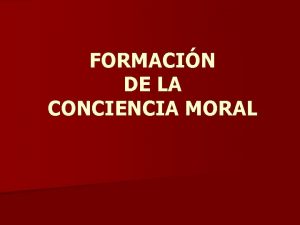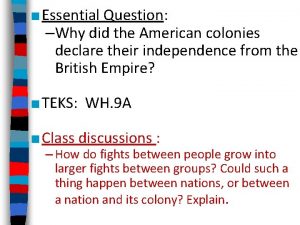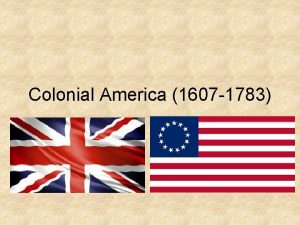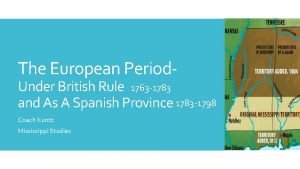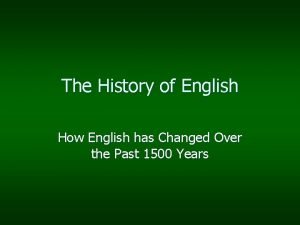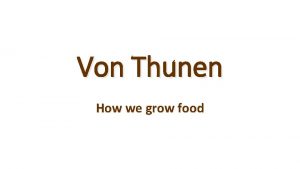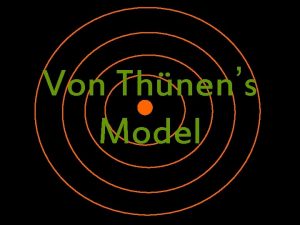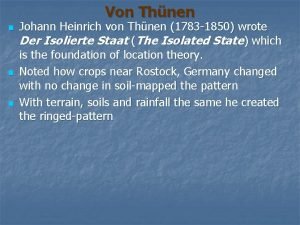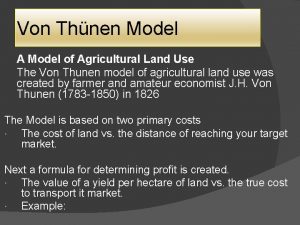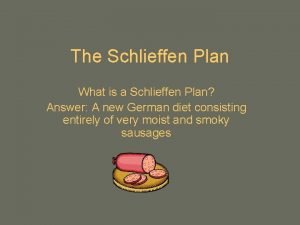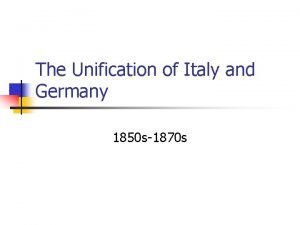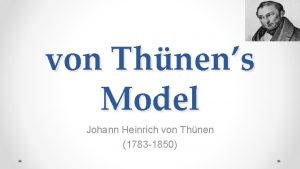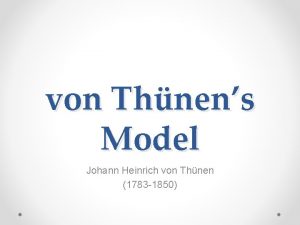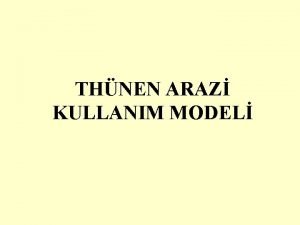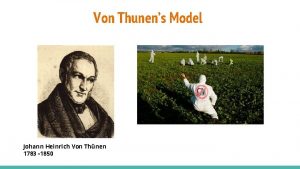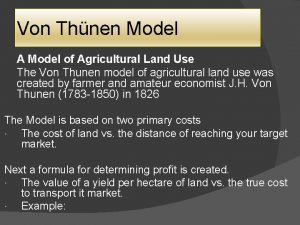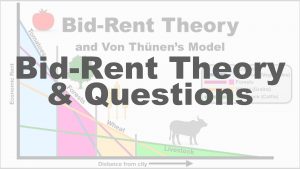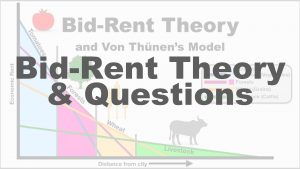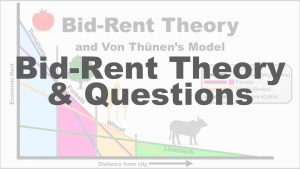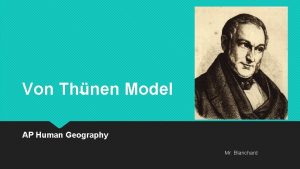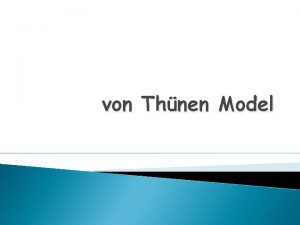Von Thnens Model Von Thnen 1783 1850 German














- Slides: 14

Von Thünen’s Model

Von Thünen • 1783 -1850 • German Farmer • Amateur Economist • Model translated into English in 1966

• 1 2 3 4 = Central City 1. Intensive farming and dairying. 2. Forest (wood, building materials) 3. Extensive field crops 4. Ranching, animal products.

Von Thünen’s Assumptions 1. The city is located within an “Isolated State” which is self-sufficient. 2. The Isolated State is surrounded by unoccupied wilderness.

Von Thünen’s Assumptions 3. The land of the State is completely flat and has no rivers or mountains. 4. The soil quality and climate are consistent throughout the state.

Von Thünen’s Assumptions 5. Farmers in the State transport their own goods to market by using an oxcart, across land directly to the central city. Therefore, there are no roads. 6. Farmers act to maximize profits.

* This is still an important model in geography because it is an excellent illustration of the balance between land cost and transportation costs. As one gets closer to a city, the price of land increases.


• Hand Labor • Small Plots • • Mechanization Large corporately owned holdings No fertilizers Natural fertilizers Chemical fertilizers Natural Seed Production Hybrid Seeds Farm to family Farm to processing to supermarkets Nature controlled water Man controlled water

Conclusions • Farm land use showed a concentric ring of zones around a city. • Rings closest to the market specialized in perishable commodities that were expensive to transport and in high demand. • Further from the city land was used for less perishable crops with lower transport costs. • Land closer to the market was used intensively. • Land further from the market was used more extensively. • Concepts of friction of distance and rent theory hold true in this model.

How well it works today • In many LDCs today. Many countries produce less bulky products for the core region of the world in order to keep transportation costs low. • Does an okay job in highly developed countries of the world. • Chicago area works okay. • US east to west – somewhat true, not great. • Denver south to north and west to east.


Problems • Impending urbanization challenges the ring around urban areas where there is a ring of extensive agriculture. • Von Thunen does not take into account the global economy of today. Multiple markets. • Does not take into account the improved methods of transportation. • Did not consider landforms. • Did not consider social customs and government policies that influence the attractiveness of plants and animals for a commercial farmer. • Small region with a single market but applies because farmers in remote location who want to sell their output in major markets of W Europe and N America are less likely to grow highly perishable and bulky produce.

Why is does not always apply today. • Refrigeration and food preservation • Improved transportation • Regional and global markets are subject to corporate decision making. • Government policy • Agricultural products used for purposes other than food. • Forests no longer occupy a zone close to the market.
 Previous owner of the original united states
Previous owner of the original united states Catecismo de la iglesia 1783
Catecismo de la iglesia 1783 Us in 1783
Us in 1783 Catecismo de la iglesia 1783
Catecismo de la iglesia 1783 Us in 1783
Us in 1783 1783-1607
1783-1607 Under british rule, 1763-1783
Under british rule, 1763-1783 Treaty of paris 1783 apush
Treaty of paris 1783 apush Low german vs high german
Low german vs high german Township and range ap human geography
Township and range ap human geography Thnen
Thnen Thnen
Thnen Thnen
Thnen Describe the schlieffen plan
Describe the schlieffen plan Where was prussia in 1850
Where was prussia in 1850


